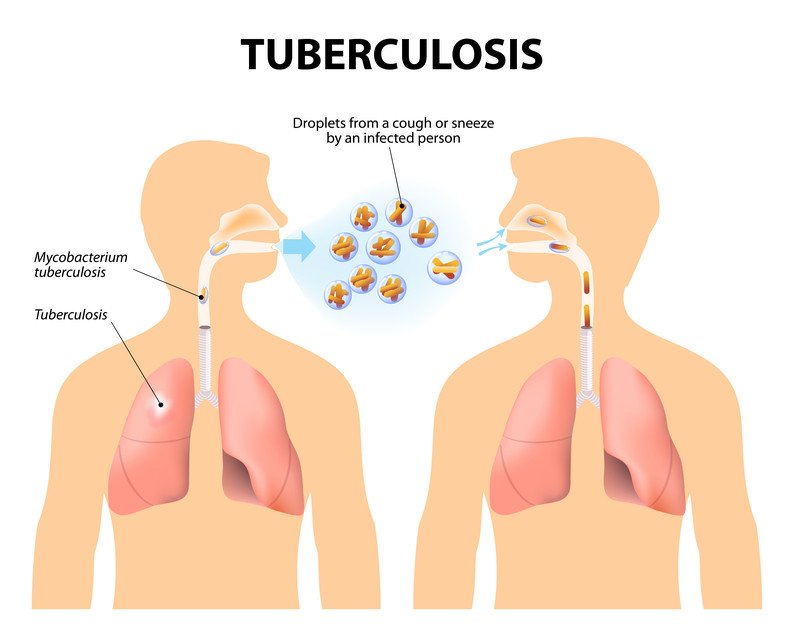The nurse is discharging a client newly diagnosed with tuberculosis. Which medications should be included in the discharge planning? (SELECT ALL THAT APPLY)
Albuterol
Isoniazid
Pyrazinamide
Tiotropium
Rifampin
Correct Answer : B,C,D,E
Choice A reason: Albuterol is a bronchodilator used to treat conditions like asthma and chronic obstructive pulmonary disease (COPD). It is not typically used in the treatment of tuberculosis (TB). TB treatment focuses on antibiotics that target the Mycobacterium tuberculosis bacteria.
Choice B reason: Isoniazid is one of the primary medications used in the treatment of tuberculosis. It works by inhibiting the synthesis of mycolic acids, which are essential components of the bacterial cell wall. Isoniazid is usually part of the initial treatment regimen for TB and is taken for several months to ensure the complete eradication of the bacteria.
Choice C reason: Pyrazinamide is another key medication in the treatment of tuberculosis. It is particularly effective during the initial phase of treatment and helps to reduce the duration of therapy. Pyrazinamide works by disrupting the bacterial cell membrane metabolism and transport functions.
Choice D reason: Tiotropium is a long-acting bronchodilator used to manage COPD. It is not used in the treatment of tuberculosis. The focus of TB treatment is on antibiotics that specifically target the TB bacteria.
Choice E reason: Rifampin is a critical antibiotic in the treatment of tuberculosis. It works by inhibiting the RNA synthesis of the bacteria, effectively killing the TB bacteria. Rifampin is usually taken in combination with other TB medications to prevent the development of drug-resistant strains of the bacteria.

Nursing Test Bank
Naxlex Comprehensive Predictor Exams
Related Questions
Correct Answer is A
Explanation
Choice A reason:
A pH of 7.37, PaO2 of 90 mmHg, PaCO2 of 44 mmHg, and HCO3 of 22 mEq/L indicate a near-normal acid-base balance and adequate oxygenation. The pH is within the normal range (7.35-7.45), suggesting that the client’s acid-base status has improved. The PaO2 is also within the normal range (80-100 mmHg), indicating good oxygenation.
Choice B reason:
A pH of 7.36, PaO2 of 60 mmHg, PaCO2 of 45 mmHg, and HCO3 of 22 mEq/L indicate a slightly acidic pH and hypoxemia (low PaO2). While the pH is close to normal, the low PaO2 suggests that the client is still experiencing significant respiratory distress.
Choice C reason:
A pH of 7.48, PaO2 of 80 mmHg, PaCO2 of 32 mmHg, and HCO3 of 18 mEq/L indicate alkalosis (high pH) and a low PaCO2, which may suggest hyperventilation. This is not an improved acid-base status as it indicates an imbalance.
Choice D reason:
A pH of 7.27, PaO2 of 70 mmHg, PaCO2 of 38 mmHg, and HCO3 of 14 mEq/L indicate acidosis (low pH) and hypoxemia. This result suggests that the client is still in significant respiratory distress and has not achieved an improved acid-base status.
Correct Answer is C
Explanation
Choice A reason: Placing the client on cardiac monitoring is important, especially if there are signs of cardiac involvement or if the client is at risk for arrhythmias. However, it is not the primary intervention for hypernatremia. Hypernatremia primarily affects fluid balance and neurological status.
Choice B reason: Monitoring breath sounds every 4 hours is a good practice, particularly if there is a risk of fluid overload or respiratory complications. However, it does not directly address the issue of hypernatremia. The primary concern with hypernatremia is managing fluid balance and preventing further increases in serum sodium levels.
Choice C reason: Restricting fluids to 500 mL per day is a critical intervention for managing hypernatremia. Hypernatremia often results from a deficit in free water, leading to an elevated serum sodium level. Fluid restriction helps to prevent further increases in sodium concentration and assists in gradually correcting the imbalance. This intervention directly addresses the underlying issue of hypernatremia and helps to stabilize the client’s condition.
Choice D reason: Implementing safety precautions is important, especially if the client is experiencing neurological symptoms such as confusion or agitation. While safety precautions are necessary, they are not the primary intervention for correcting hypernatremia. The focus should be on managing fluid balance and serum sodium levels.
Whether you are a student looking to ace your exams or a practicing nurse seeking to enhance your expertise , our nursing education contents will empower you with the confidence and competence to make a difference in the lives of patients and become a respected leader in the healthcare field.
Visit Naxlex, invest in your future and unlock endless possibilities with our unparalleled nursing education contents today
Report Wrong Answer on the Current Question
Do you disagree with the answer? If yes, what is your expected answer? Explain.
Kindly be descriptive with the issue you are facing.
